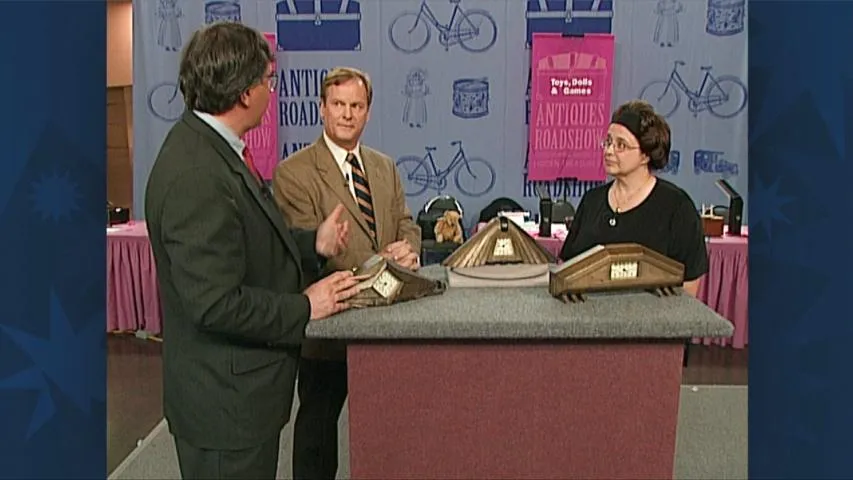GUEST: They belonged to our grandmother and my uncle, who lived with them his whole life. When he died two years ago, my father got everything then. And we went back and broke up the household, sold the house and brought all the contents here. Found them in the basement. Found them in the basement.
APPRAISER: Well, these, of course, are salt-glaze stoneware. Now, at the end of the 18th century, it came to be found out that redware had lead glaze and it could kill you. I mean, it was full of lead which could flake off into your dinner. And so the answer was salt-glaze stoneware. When this is being fired, it's fired very, very hot. It's fired at a temperature that would melt ordinary redware. And as soon as it got to a point where the clay would fuse, become hard, they threw in salt through the ports of the kiln-- ordinary table salt-- and it formed like a layer of glass on the outside of the pot.
GUEST: The salt did?
APPRAISER: Well, it combined actually...
GUEST: With the glaze?
APPRAISER: With the silica on the body of the pot and formed not just a coating but it penetrated in and became a part of it. Now, these particular pots were made in western Pennsylvania. Western Pennsylvania, the area where this one was made-- in particular, Greensboro-- is one of the earliest centers of stoneware production in this part of the country. They are representative of the type of ware that was made in Greensboro and neighboring... Is it Brownsville?
GUEST: Brownsville.
APPRAISER: Yeah, and the designs are stenciled with cobalt. And being as they're of this size, I would estimate their value to be probably around $800 to $900 apiece.
GUEST: Wow...
APPRAISER: You like that?
GUEST: Yeah, yeah...










